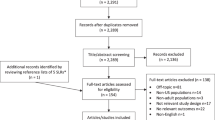Abstract
This study examined achievement of blood pressure (BP) goals, changes in antihypertensive therapy and reasons for these changes among adults with hypertension initiating angiotensin-converting enzyme inhibitors (ACEIs), angiotensin receptor blockers (ARBs) or calcium channel blockers (CCBs). Claims data were examined for changes to medication regimens. Patient charts for 501 patients provided BP levels and reasons for changing medications. BP goal achievement was highest for initiators of ARBs (81.4%), compared with ACEIs (75.5%; P=NS) and CCBs (68.9%; P<0.01). Changes in antihypertensive therapy were least likely among ARB recipients (59.9%) compared with ACEIs (71.86%; P=0.02) and CCBs (74.85%; P<0.01). Failure to achieve BP goals was the most common reason for change in therapy (ARB, 32.9%; ACEI, 42.5%, P=NS; CCB, 47.9%, P<0.01). Although most patients achieved target BP goals, many required changes in treatment regimens. Initial choice of antihypertensive therapy may mitigate changes in therapies and better achieve BP goals.
This is a preview of subscription content, access via your institution
Access options
Subscribe to this journal
Receive 12 digital issues and online access to articles
$119.00 per year
only $9.92 per issue
Buy this article
- Purchase on Springer Link
- Instant access to full article PDF
Prices may be subject to local taxes which are calculated during checkout
Similar content being viewed by others
References
Lewington S, Clarke R, Qizilbash N, Peto R, Collins R . Prospective Studies Collaboration. Age-specific relevance of usual blood pressure to vascular mortality: a meta-analysis of individual data for one million adults in 61 prospective studies. Lancet 2002; 360: 1903–1913.
Wang JG, Staessen JA, Franklin SS, Fagard R, Gueyffier F . Systolic and diastolic blood pressure lowering as determinants of cardiovascular outcome. Hypertension 2005; 45: 907–913.
Chobanian AV, Bakris GL, Black HR et al. and the National High Blood Pressure Education Program Coordinating Committee. Seventh report of the Joint National Committee on Prevention, Detection, Evaluation, and Treatment of High Blood Pressure (JNC 7). Hypertension 2003; 42: 1206–1252.
Ostchega Y, Yoon SS, Hughes J, Louis T . Hypertension Awareness, Treatment, and Control—Continued Disparities in Adults: United States, 2005–2006. NCHS Data Brief No 3. National Center for Health Statistics: Hyattsville, MD, 2008.
Andrade SE, Gurwitz JH, Field TS et al. Hypertension management: the care gap between clinical guidelines and clinical practice. Am J Manag Care 2004; 10: 481–486.
Andros V, Egger A, Dua U . Blood pressure goal attainment according to JNC 7 guidelines and utilization of antihypertensive drug therapy in MCO patients with type 1 or type 2 diabetes. J Manag Care Pharm 2006; 12: 303–309.
Bramley TJ, Gerbino PP, Nightengale BS, Frech-Tamas F . Relationship of blood pressure control to adherence with antihypertensive monotherapy in 13 managed care organizations. J Manag Care Pharm 2006; 12: 239–245.
DiMatteo MR, Giordani PJ, Lepper HS, Croghan TW . Patient adherence and medical treatment outcomes: a meta-analysis. Med Care 2002; 40: 794–811.
Phillips LS, Branch WT, Cook CB et al. Clinical inertia. Ann Intern Med 2001; 135: 825–834.
Moser M, Franklin SS . Hypertension management: results of a new national survey for the hypertension education foundation: Harris interactive. J Clin Hypertens (Greenwich) 2007; 9: 316–323.
Ferrari P, the National Coordinators for the Reasons for not Intensifying Antihypertensive Treatment (RIAT) trial12. Reasons for therapeutic inertia when managing hypertension in clinical practice in non-Western countries. J Hum Hypertens 2009; 23: 151–159.
Kerr EA . The role of clinical uncertainty in treatment decisions for diabetic patients with uncontrolled blood pressure. Ann Intern Med 2008; 148: 717–727.
Rosen MI, Rigsby MO, Salahi JT, Ryan CE, Cramer JA . Electronic monitoring and counseling to improve medication adherence. Behav Res Therapy 2004; 42: 409–422.
Ho PM, Magid DJ, Shetterly SM et al. Importance of therapy intensification and medication nonadherence for blood pressure control in patients with coronary disease. Arch Intern Med 2008; 168: 271–276.
Heisler M, Hogan MM, Hofer TP, Schmittdiel JA, Pladevall M, Kerr EA . When more is not better: treatment intensification among hypertensive patients with poor medication adherence. Circulation 2008; 117: 2884–2892.
Rose AJ . Intensifying therapy for hypertension despite suboptimal adherence. Hypertension 2009; 54: 524–529.
Darkow T, Henk HJ, Thomas SK et al. Treatment interruptions and non-adherence with imatinib and associated health care costs: a retrospective analysis among managed care patients with chronic myelogenous leukemia. Pharmacoeconomics 2007; 25: 481–496.
Schneeweiss R, Rosenblatt RA, Cherkin DC, Kirkwood CR, Hart G . Diagnosis clusters: a new tool for analyzing the content of ambulatory medical care. Med Care 1983; 21: 105–122.
Ferrari P, Hess L, Pechere-Bertschi A, Muggli F, Burnier M . Reasons for not intensifying antihypertensive treatment (RIAT): a primary care antihypertensive intervention study. J Hypertens 2004; 22: 1221–1229.
O’Connor PJ . Overcome clinical inertia to control systolic blood pressure. Arch Intern Med 2003; 163: 2677–2678.
Acknowledgements
We thank Ami Sklar, Theresa Rayl, Felix Cao and Yvette Dennis for their assistance in management of the medical chart abstraction and development of the study database, and Herbert Heien for assistance in study analyses.
Author information
Authors and Affiliations
Corresponding author
Rights and permissions
About this article
Cite this article
Engel-Nitz, N., Darkow, T. & Lau, H. Antihypertensive medication changes and blood pressure goal achievement in a managed care population. J Hum Hypertens 24, 659–668 (2010). https://doi.org/10.1038/jhh.2010.2
Received:
Revised:
Accepted:
Published:
Issue Date:
DOI: https://doi.org/10.1038/jhh.2010.2
Keywords
This article is cited by
-
Antihypertensive drug treatment changes in the general population: the colaus study
BMC Pharmacology and Toxicology (2014)
-
Endothelial dysfunction and diurnal variation of blood pressure: night secrets of arterial hypertension?
Journal of Human Hypertension (2011)



